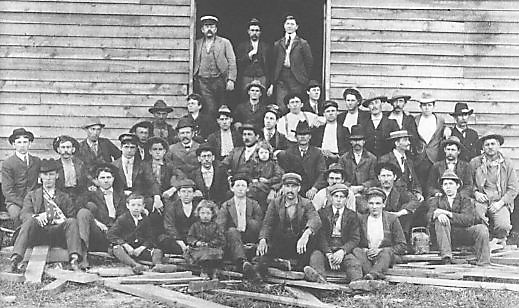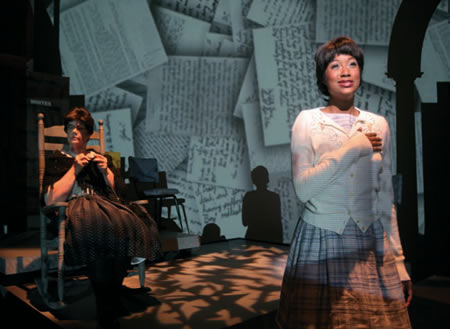|
Thomas B. Stanley
Thomas Bahnson Stanley (July 16, 1890 – July 10, 1970) was an American politician, furniture manufacturer and Holstein cattle breeder. A Democrat and member of the Byrd Organization, Stanley served in a number of different political offices in Virginia, including as the 47th speaker of the Virginia House of Delegates and as the Commonwealth's 57th governor. He became known for his support of the Massive Resistance strategy to prevent school desegregation mandated by the United States Supreme Court's decisions in ''Brown v. Board of Education'', and Virginia's attempt to circumvent those decisions (ultimately overturned by both the Virginia Supreme Court and by federal courts) was known as the Stanley Plan. Early life He was born to Crockett Stanley (January 8, 1838 – March 12, 1915) and Susan Matilda Walker (August 17, 1845 – April 9, 1922) on a farm near Spencer, Henry County, Virginia, the youngest of seven children. He married Anne Pocahontas Bassett (Nove ... [...More Info...] [...Related Items...] OR: [Wikipedia] [Google] [Baidu] |
Governor Of Virginia
The governor of the Commonwealth of Virginia serves as the head of government of Virginia for a four-year term. The incumbent, Glenn Youngkin, was sworn in on January 15, 2022. Oath of office On inauguration day, the Governor-elect takes the following oath of office: ''"I do solemnly swear (or affirm) that I will support the Constitution of the United States, and the Constitution of the Commonwealth of Virginia, and that I will faithfully and impartially discharge all the duties incumbent upon me as Governor of the Commonwealth of Virginia, according to the best of my ability. (So help me, God.)"'' Qualifications Article V, Section 3 of the Virginia Constitution lists the following qualifications for a person to be elected Governor of Virginia: * Be a citizen of the United States * Be at least thirty years old * Be a resident and a registered voter in the Commonwealth of Virginia for at least five years before the election Unlike other state governors, Virginia governor ... [...More Info...] [...Related Items...] OR: [Wikipedia] [Google] [Baidu] |
Stanleytown, Virginia
Stanleytown is a census-designated place (CDP) in Henry County, Virginia, United States. The population was 1,422 at the 2010 census. It is part of the Martinsville Micropolitan Statistical Area. History Edgewood and Stoneleigh houses are listed on the National Register of Historic Places. Geography Stanleytown is located at (36.751657, −79.948714). According to the United States Census Bureau, the CDP has a total area of 2.7 square miles (6.9 km2), all of it land. Demographics As of the census of 2000, there were 1,515 people, 662 households, and 442 families residing in the CDP. The population density was 564.3 people per square mile (218.3/km2). There were 723 housing units at an average density of 269.3/sq mi (104.2/km2). The racial makeup of the CDP was 88.32% White, 2.57% African American, 0.13% Native American, 0.13% Pacific Islander, 7.46% from other races, and 1.39% from two or more races. Hispanic or Latino of any race were 11.49% of the popu ... [...More Info...] [...Related Items...] OR: [Wikipedia] [Google] [Baidu] |
Bassett, Virginia
Bassett is a census-designated place (CDP) in Henry County, Virginia, United States. The population was 1,100 at the 2010 census. It is part of the Martinsville Micropolitan Statistical Area. The town was founded along a rail line by the same family that later started Bassett Furniture. Bassett Furniture's headquarters have remained in Bassett since it began in 1902. History The John D. Bassett High School, Eltham Manor, and R.L. Stone House are listed on the National Register of Historic Places. The town of Bassett was named for John D. Bassett and his family. The train depot in Bassett historically had three trains a day picking up product from the company and passengers. Today it is used as a seasonal community market. The Bassett Historical Center is located in the town. "The Bassett Historical Center is the repository for all genealogical research and local history for the counties of Henry and Patrick County, Virginia and the City of Martinsville, Virginia." Now op ... [...More Info...] [...Related Items...] OR: [Wikipedia] [Google] [Baidu] |
Virginia Supreme Court
The Supreme Court of Virginia is the highest court in the Commonwealth of Virginia. It primarily hears direct appeals in civil cases from the trial-level city and county circuit courts, as well as the criminal law, family law and administrative law cases that are initially appealed to the Court of Appeals of Virginia. It is one of the oldest continuously active judicial bodies in the United States. It was known as the Supreme Court of Appeals until 1970, when it was renamed the Supreme Court of Virginia because it has original as well as appellate jurisdiction. History of the Supreme Court of Virginia Colony of Virginia The Supreme Court of Virginia has its roots in the seventeenth century English legal system, which was instituted in Virginia as part of the Charter of 1606 under which Jamestown, Virginia, the first permanent English settlement in North America, was established. In 1623, the Virginia House of Burgesses created a five-member appellate court, which met quarte ... [...More Info...] [...Related Items...] OR: [Wikipedia] [Google] [Baidu] |
Brown V
Brown is a color. It can be considered a composite color, but it is mainly a darker shade of orange. In the CMYK color model used in printing or painting, brown is usually made by combining the colors Orange (colour), orange and black. In the RGB color model used to project colors onto television screens and computer monitors, brown combines red and green. The color brown is seen widely in nature, wood, soil, human brown hair, hair color, eye color and Human skin color, skin pigmentation. Brown is the color of dark wood or rich soil. According to public opinion surveys in Europe and the United States, brown is the least favorite color of the public; it is often associated with plainness, the rustic, feces, and poverty. More positive associations include baking, warmth, wildlife, and the autumn. Etymology The term is from Old English , in origin for any dusky or dark shade of color. The first recorded use of ''brown'' as a color name in English was in 1000. The Common Germanic a ... [...More Info...] [...Related Items...] OR: [Wikipedia] [Google] [Baidu] |
United States Supreme Court
The Supreme Court of the United States (SCOTUS) is the highest court in the federal judiciary of the United States. It has ultimate appellate jurisdiction over all U.S. federal court cases, and over state court cases that involve a point of federal law. It also has original jurisdiction over a narrow range of cases, specifically "all Cases affecting Ambassadors, other public Ministers and Consuls, and those in which a State shall be Party." The court holds the power of judicial review, the ability to invalidate a statute for violating a provision of the Constitution. It is also able to strike down presidential directives for violating either the Constitution or statutory law. However, it may act only within the context of a case in an area of law over which it has jurisdiction. The court may decide cases having political overtones, but has ruled that it does not have power to decide non-justiciable political questions. Established by Article Three of the United States C ... [...More Info...] [...Related Items...] OR: [Wikipedia] [Google] [Baidu] |
Desegregation
Desegregation is the process of ending the separation of two groups, usually referring to races. Desegregation is typically measured by the index of dissimilarity, allowing researchers to determine whether desegregation efforts are having impact on the settlement patterns of various groups. This is most commonly used in reference to the United States. Desegregation was long a focus of the American civil rights movement, both before and after the United States Supreme Court's decision in ''Brown v. Board of Education'', particularly desegregation of the school systems and the military (''see Military history of African Americans''). Racial integration of society was a closely related goal. US military Early history Starting with King Philip's War in the 17th century, Black and White Americans served together in an integrated environment in the Thirteen Colonies. They continued to fight alongside each other in every American war until the war of 1812. Black people would not fight i ... [...More Info...] [...Related Items...] OR: [Wikipedia] [Google] [Baidu] |
Massive Resistance
Massive resistance was a strategy declared by U.S. Senator Harry F. Byrd Sr. of Virginia and his brother-in-law James M. Thomson, who represented Alexandria in the Virginia General Assembly, to get the state's white politicians to pass laws and policies to prevent public school desegregation, particularly after ''Brown v. Board of Education''. Many schools, and even an entire school system, were shut down in 1958 and 1959 in attempts to block integration, before both the Virginia Supreme Court and a special three-judge panel of Federal District judges from the Eastern District of Virginia, sitting at Norfolk, declared those policies unconstitutional. Although most of the laws created to implement massive resistance were overturned by state and federal courts within a year, some aspects of the campaign against integrated public schools continued in Virginia for many more years. Byrd Organization and opposition to racial integration After Reconstruction ended in 1877 and the loc ... [...More Info...] [...Related Items...] OR: [Wikipedia] [Google] [Baidu] |
Byrd Organization
The Byrd machine, or Byrd organization, was a political machine of the Democratic Party led by former Governor and U.S. Senator Harry F. Byrd (1887–1966) that dominated Virginia politics for much of the 20th century. From the 1890s until the late 1960s, the Byrd organization effectively controlled the politics of the state through a network of courthouse cliques of local constitutional officers in most of the state's counties. "The organization" had its greatest strength in rural areas. It was never able to gain a significant foothold in the growing urban areas of Virginia's many independent cities, which are not located within counties, nor with the emerging suburban middle-class of Virginians after World War II. Byrd's vehement opposition to racial integration of the state's public schools, including a policy of massive resistance, which ultimately failed in 1960 after it was ruled unconstitutional by both state and federal courts, could be described as the organization' ... [...More Info...] [...Related Items...] OR: [Wikipedia] [Google] [Baidu] |
Encyclopedia Virginia
Virginia Humanities (VH), formerly the Virginia Foundation for the Humanities, is a humanities council whose stated mission is to develop the civic, cultural, and intellectual life of the Commonwealth of Virginia by creating learning opportunities for all Virginians. VH aims to bring the humanities fully into Virginia's public life, assisting individuals and communities in their efforts to understand the past, confront important issues in the present, and shape a promising future. History Since its founding in 1974, VH has sponsored more than 40,000 humanities programs across the Commonwealth. VH is one of 56 state humanities councils that are part of the Federation of State Humanities Councils. Humanities councils were created by the United States Congress in 1974 and receive an annual congressional appropriation through the National Endowment for the Humanities, which for most councils is supplemented by state and private funding. In March 2018 it assumed the new, shortened name ... [...More Info...] [...Related Items...] OR: [Wikipedia] [Google] [Baidu] |
.jpg)


